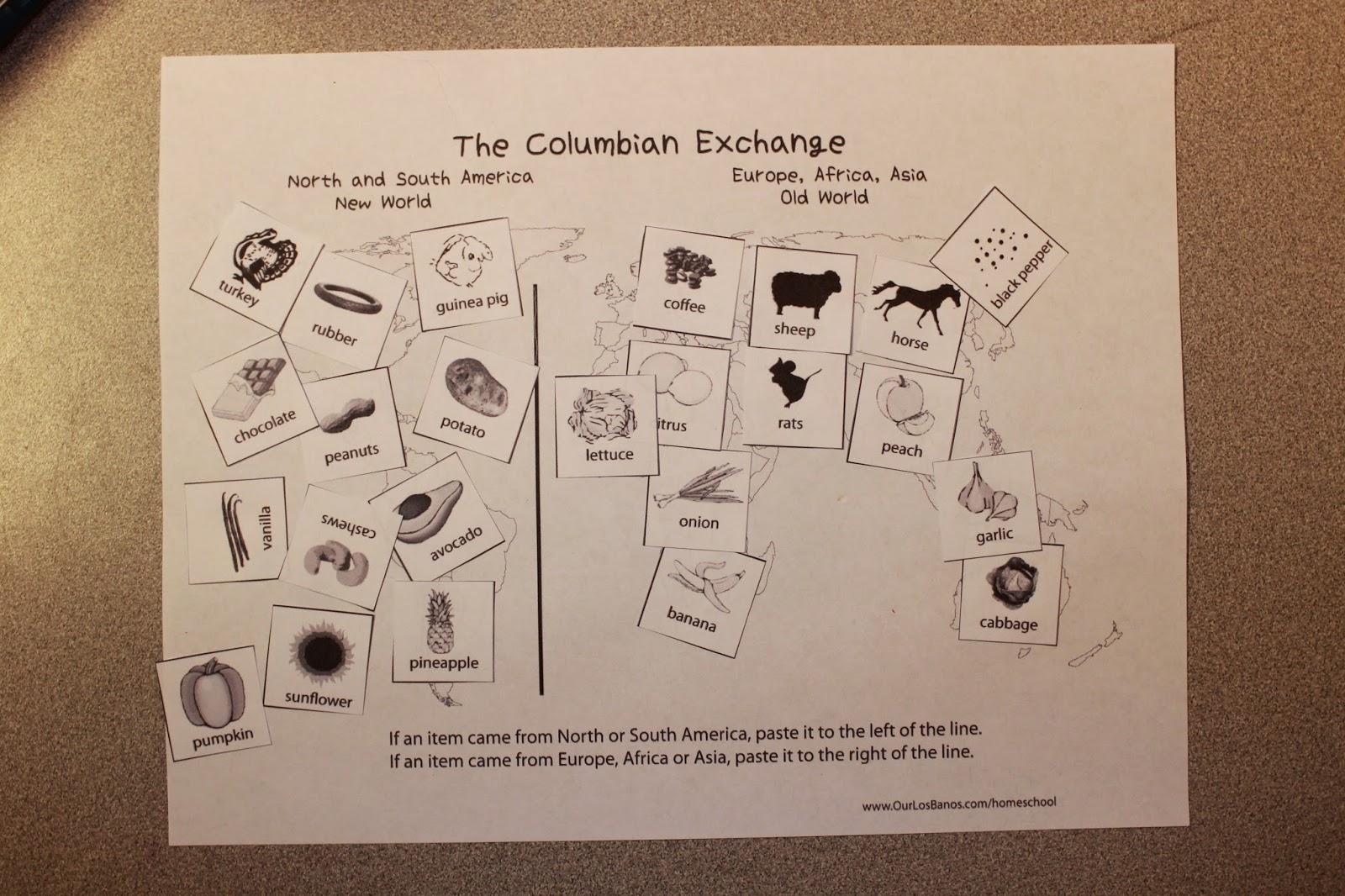*PLEASE BE AWARE that the Taino people did not wear clothing, and though they are usually shown clothed in books and videos, some artwork online or in documentaries may depict them in various stages of nudity. I encourage parents and teachers to choose resources ahead of time and preview all documentaries or books, even those recommended here, to make sure you find them appropriate for your children.
In addition to studying the life and voyages of Christopher Columbus, we decided to devote equal time to learning about the indigenous peoples he first encountered. I wanted Hunter to understand that while Columbus is a celebrated historical figure who certainly changed the world, these changes resulted in tragedy for the inhabitants of the lands he "discovered".


We read many books about Christopher Columbus in addition to our main history text, but these are the two we found the most helpful. Click on either of the pictures to check them out!
Here's the Interactive 3D Map of Columbus' first voyage that Hunter colored and assembled. Looks great, doesn't it? He worked so hard.
Some of the pieces are glued down, but the ships move along the track between Spain and the Caribbean.
We got the map from this book, and look forward to making more! Click on the picture to find out more about the book; it's a great addition to any homeschool.
He also completed this fabulous flip-flap book from Simply Skilled in Second. (The finished product can include one of Columbus' ships! Follow the link to see her examples.)
Each flap has maps, writing prompts, questions, or space to draw so the student can really show what they've learned.
We use these flip-flap books a lot, for history, science, and language arts. She has a fantastic collection and it's growing all the time!
Hunter loves documentaries, and we were happy to find this one by National Geographic on YouTube. The title is a little misleading; it's really about the impact of European settlement on the North and Central American civilizations. It's a good jumping off point for discussion about the positive and negative aspects of the Columbian exchange, and whether any of the negatives could have been avoided.
This story by Jane Yolen is told from the point of view of a young Taíno boy who is suspicious of the strangers that have suddenly appeared in his land. He tries to warn the adults of his village that the newcomers seem more interested in gold than friendship, but no one listens.
This FREE activity from Guest Hollow requires students to cut out the items (including foods, animals, and other resources) and paste them on either the New World or Old World side of the map. An answer key is included.
Each of these wonderful picture books tells a version of a Taíno creation myth explaining the origin of the sea. Click on either of them to view them on Amazon.com. (We were able to get both from our local library.) We created a Venn Diagram to compare and contrast the two stories. (You can find a free Venn Diagram designed for comparing two books right here.)
We studied zemis, sculptural objects the Taíno believed to house spirits, often of ancestors. Some zemis had full bodies, while others consisted of only a head or mask. Hunter made this sculpture with Crayola Air Dry Clay. It's based on an actual zemi at the Walters Art Museum.
This short video about the decimation of the Taíno peoples was made by Puerto Rican high school students for a senior project. They did a fantastic job!
Hunter was surprised to learn how many English words come from the Taino language, including:
Barbeque
Canoe
Potato
Manatee
Savannah
Papaya
Cannibal
Cuba
Jamaica
Guava
Hammock
Hurricane
and Iguana
If you want to learn more about the Taino before teaching, here are a couple great resources for adults:
What Became of the Taíno? is a great article on Smithsonian.com
This Wikipedia article is also very informative and links to more great resources.
Blogs and Shops featured in this post:











